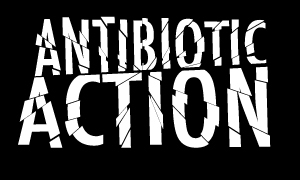Brief History
After school, I wanted to do something useful during my "Zivildienst" (community service) and helped the German nature conservation organisation "Naturschutzbund" for 18 months.
I studied Biology at the University of Surrey, Guildford, UK (1985), the University of Konstanz, Germany (1985-1987), and the University of Tübingen, Germany (1987-1990).
During my "Diplom" (1990-1991) and PhD thesis (1991-1995), and as a Postdoc (1995-1996) with Bernhard Schink's group, I investigated the physiology and biochemistry of a new anaerobic isolate that intrigued me because of its unusual properties. Previously, no bacterium was known to couple O2-independent ether cleavage with the production of dimethyl sulfide from inorganic sulfide. This fascinating bacterium furthermore combines two pathways, demethylation and ring degradation, that were known from its competitors, into one longer pathway, which yields more ATP, but the bacteria grow more slowly than the competitors that only demethylate or only degrade the aromatic ring. I did not understand why this bacterium grows more slowly during my work in the Schink lab, but many years later while at Bonn, I came across kinetic theory that can in fact explain this observation.
At the end of my PhD, I stumbled over a book on the Complex Adaptive Systems and Artificial Life research carried out at the Santa Fe Institute. This sparked my interest in computer simulations of ecological scenarios and I decided to go into individual-based modelling.
My aim in joining Julian Wimpenny in Cardiff (1997-2001) was to establish Individual-based Modelling (IbM) in Microbial Ecology. The first step was to prove that IbM of bacteria is feasible by writing an IbM of colony growth of Escherichia coli, which I called BacSim. As the next step, I extended this model to multi-species, multi-substrate biofilms, choosing nitrification as a simple example of a foodchain. Later, I included Extracellular Polymeric Substance (EPS) formation in the model.
Following my move to Wolfgang Alt's Theoretical Biology group at the University of Bonn in September 2001, I have continued to work on IbM of biofilms and begun to teach Mathematical Modelling in Ecology, Evolution, and Microbiology. My research areas have expanded and I work on many interesting problems, such as the evolution of cooperation and altruism in biofilms, the explanation of metabolic division of labour by kinetic theory of optimal pathway length, the individual-based modelling of horizontal gene transfer in biofilms, the osmoregulation by production of compatible solutes in halophilic bacteria, the growth of Salmonella in eggs, and the dynamics of cell-cell contact in biofilms and tissues.
In September 2007 I joined the University of Birmingham as a Lecturer in Computational Biology in the Centre for Systems Biology. Here I have a wet lab again, which allows us to measure parameters for our models or test model predictions. My group in Birmingham has been growing and shrinking and growing again, for current and former members of the group you can go to our people page. My teaching has also grown, and so have my administrative responsibilities, e.g. for the Biosciences Graduate Research School and as a Deputy Director of the Centre for Systems Biology (CSB). My diverse research portfolio has expanded somewhat more, attracting criticism of not being focussed enough. Hence I take the opportunity to point out that most of my hopefully lasting contributions to science have come from combining ideas or theories from disparate fields! Please look at the pages of my students and co-workers for more information on current research topics such as modelling groundwater biofilm communities, optimal gut layouts, and horizontal gene transfer.

